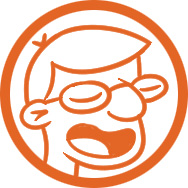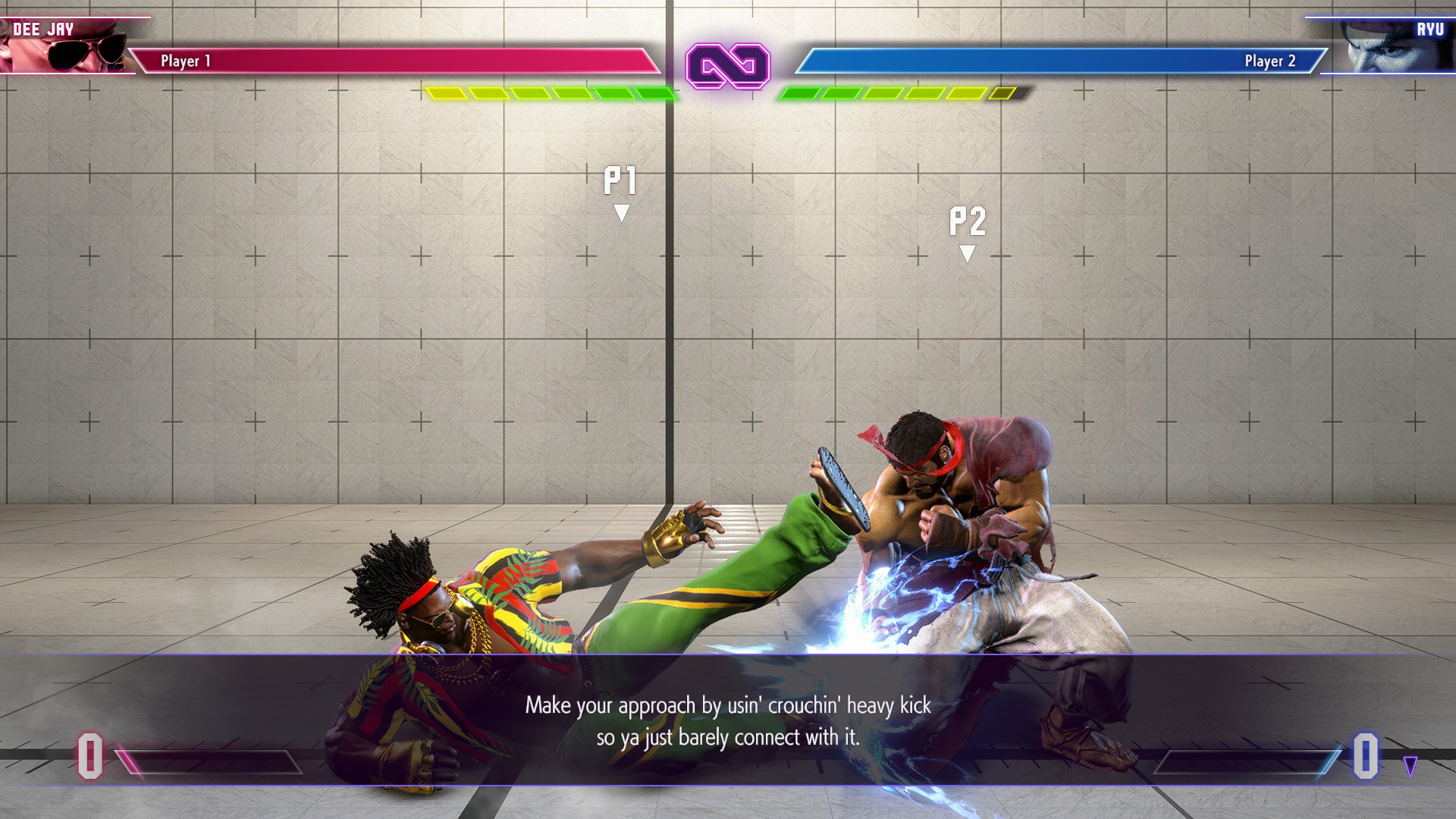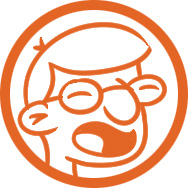Fighting Ground

Fighting Ground is the third and final piece of the Street Fighter 6 content package, where they jam in all of the standard features you'd expect from a fighting game. While not every feature here is revolutionary, all of it has a surprisingly high quality of life that shows Capcom has finally begun listening to criticisms of its games over the last decade.
Training Mode

Quite simply, it's the best training mode in a fighting game to date. This mode is so incredibly feature rich, with virtually every single thing a fighting game player needs to practice or test situations, and some features we didn't even know we needed but now can't live without. Talking about all of them would take too long, and if you've played the beta then you've experienced the training mode yourself, so I'll focus on just one of the more important additions.
The star of the show is the frame gauge display, a useful gauge that measures every in-game action you take with colored squares across a timeline. This allows fast study of the frame data of every move in the game with no guesswork. It allows you to easily understand exact frame data numbers for moves on hit or block, dynamically adjusting the numbers based on spacing concerns. It shows you exactly where your opponent's actions line up and how big the gaps are in your pressure without needing any advanced setups. You will learn more with this tool in one hour than in a day with older training modes. I hope every fighting game in the future adopts this system.
The one thing missing from training mode is a hitbox/hurtbox display. I hope Capcom sees the value in adding this tool to the game in a future update. But this really is the only thing I can think of that is missing. Capcom deserves huge praise for their work with this training mode.
Character Guides & Combo Trials

As with many titles, SF6 has a section where you can read dialog boxes explaining the game's systems, and then try to perform the techniques yourself. This game comes at it a bit differently, though; rather than read a block of text and then have to follow instructions blind, instead the characters perform the technique for you in the background on repeat, and you can interrupt to try it yourself any time you want with a button press.
This shift in paradigm makes the user feel more like they're watching a useful Youtube video, carefully tailored to show them exactly what is needed, so they never need to feel scared that they won't be able to do what is asked of them. Instead, they can just watch and interrupt when they feel comfortable, or move onto the next lesson and continue to absorb. The guides are also often written in the voice of the character you're controlling, which leads to some added personality that incentivizes you to check out the other characters to see how they're written.

The lessons are also structured with a progression that makes sense. They teach you what you need to know about each special move, showing useful applications in the background, and then they bring on "Fundamentals" lessons where they simply teach you one or two basic normals on the ground, one anti-air, and one super basic combo. Fundamentals lesson #1 for Ryu was simply "use crouching MK and cancel into fireball". This is digestible advice for a beginner and, coupled with the CPU playing a demo on loop, helps the user understand what they should be looking for.

The combo trials are similarly well structured, broken down into beginner, intermediate, and advanced trials. Each beginner trial is an actually useful beginner combo, usually what to do if you land a crouching MK, what to do if you land a heavy attack, and a super basic followup if you land a Drive Impact. This is universal across the cast and is actually useful instruction.
The intermediate trials bring in basic hit confirms off light attacks and more situational stuff like comboing into super or unique punish counter stuff. The advanced trials start bringing in Parry Drive Rush juggles and other timing or spacing-sensitive stuff like Luke's perfect knuckles. But I'd say 95% of all the combos they show here would be useful in a real match. None of them will be particularly hard for a fighting game expert, but their practicality is very appreciated.
Arcade Mode & Versus Battles

Arcade mode is split into 5-fight and 12-fight variants, but the story is the same in each. Each character will fight specific opponents in specific locations in a set order, with a bonus stage breaking up the action, culminating in a fight against the character's rival with special dialogue. The 12-fight variant follows the same path, but with extra padding put in against random opponents before the rival fight. The story is told through voiceover work and hand-drawn stills at the beginning and end, and helps supplement the plot of World Tour.
Versus mode is exactly what you'd expect, with the addition of an optional team variant where you can set team sizes, rules for how the characters cycle out after a loss, and many other things. There is high potential for this mode to have fun side tournaments at major events. Pressing rematch is instant and switching characters is lightning fast, which is extremely appreciated when playing long sets.
Custom Lobbies & Matchmaking

Directly from the Fighting Ground menu, you can queue up for casual or ranked online matches and let the game search for matches while you do training mode or other activities. This means you don't need to enter the Battle Hub if you'd rather get right to the matches without being tied to the virtual lobby.
Importantly, you can also set up custom lobbies here, and their implementation of this feature is excellent. The lobby is fully customizable up to 16 players, with any number of those slots reserved for private invites. You can set a passcode to make sure only those who you allow can enter. You can also allow public spectating, so an unlimited number of players who find your lobby can spectate all the matches, even if they aren't allowed as one of the 16 players inside the lobby. I can see online tournaments allowing this for in-client tournament viewing.

Once inside the lobby, you're given a list of 4 cabinets to sit at, each one individually settable to different modes and parameters (for example, one can be 1v1 battle with FT3 rules, while another cabinet can be online training mode). Players can sit at these virtual cabinets, spectate matches, and queue up to be next in line just like the Battle Hub machines. My only wish is that there were 8 cabinets, so all 16 players can be playing at once, but this will still cover the vast majority of use cases. Maybe we will see an expansion of the total number of players in this mode in a future season, once Capcom has proven the servers can be stable.
Conclusion

Fighting Ground is the bread and butter suite of functions for offline and online play done to near perfection. Everything is fast, easy to access, and powerfully customizable for almost every use case. The instructional modes empower learning in a way beyond just reading dialog boxes, the training mode is best in class, and there are modes for casual players like Arcade Mode, CPU vs CPU fights, and Extreme Battle which I didn't even have time to mention here. Most of the competitive players will spend their time here, and it's exactly what it needs to be.
